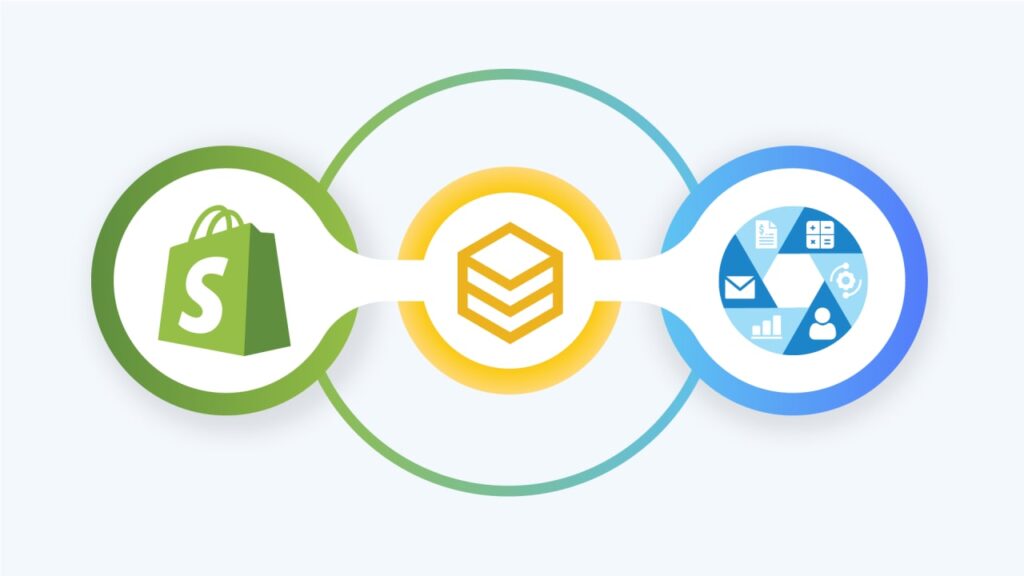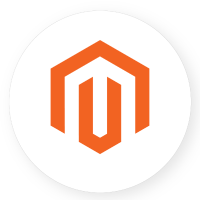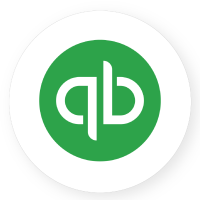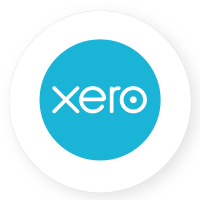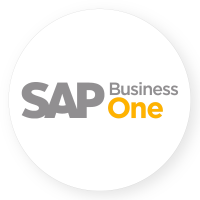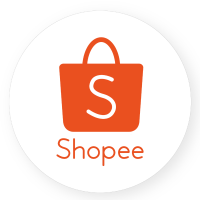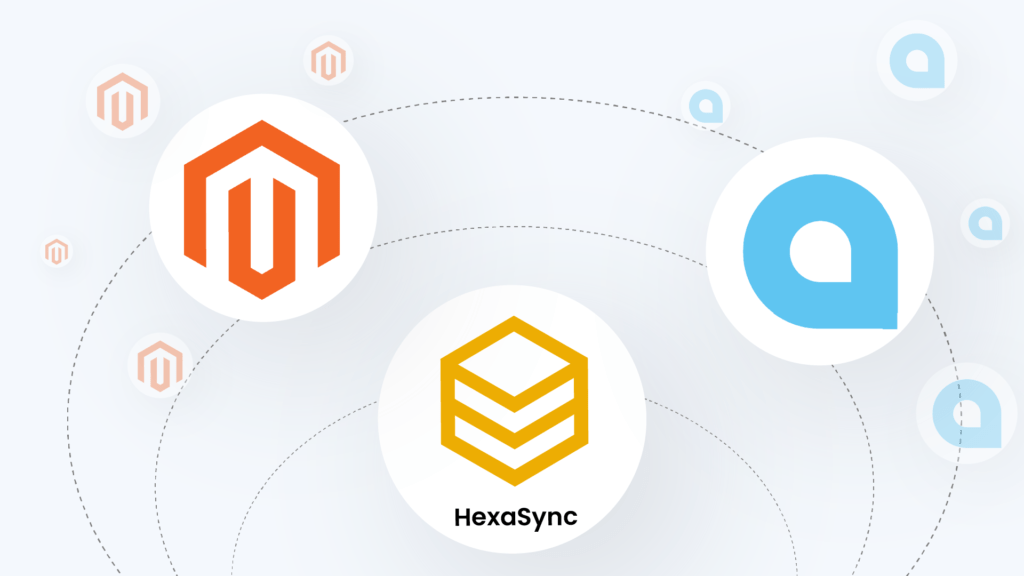Today, let’s take a look at another famous eCommerce platform: Bigcommerce vs Shopify. Both are excellent systems, but there are some key distinctions between them. One platform may be a better fit for your business than the other, depending on your needs. BigCommerce and Shopify create an endless battle for the best online store builder.
They are two of the most popular SaaS eCommerce systems for launching online stores. These platforms allow you to use a wide range of tools without knowing anything about web programming. We’ll compare the features, pricing, and community of both BigCommerce and Shopify in this post. If your business is at an enterprise level, you might want to look at our Shopify Plus and BigCommerce Enterprise comparison. Now. Let’s jump in.
Table of Contents
BigCommerce vs Shopify: Overview
BigCommerce and Shopify are SaaS eCommerce platforms (Software-as-a-Service), meaning they can be accessed via a browser without external hosting. The platform will take care of server maintenance, upgrades, and problem resolution. As a result, you can get started with your store straight away without learning much coding.
We can confidently state that both systems can meet the needs of all online retailers and budding entrepreneurs admirably. The final decision will be based primarily on your principles. Let’s take a look at both Shopify and BigCommerce financial results in 2021.
Shopify announced that total revenue for the full year of 2021 was $4,611.9 million, an 57% increase over 2020. Within this, Subscription Solutions revenue grew 48% to $1,342.3 million, while Merchant Solutions revenue grew 62% to $3,269.5 million.
Meanwhile, BigCommerce announced 2021 total revenue was $43.1M, up 39% compared to the fourth quarter of 2020. Within this, the total annual revenue run-rate (ARR) was $181.2M, up 41%. ARR Enterprise’s plan was $100.8M, up 51% compared to December 31, 2020.
BigCommerce vs Shopify: What Makes the Difference?
BigCommerce has only one core product: its eCommerce platform. The company fully reinvests in the platform it powers, committing all technical and service resources to sustain the industry’s best cloud-based, multi-channel solution.
Otherwise, payments, shipping, point-of-sale, and loans are among Shopify’s services. These services account for more than 60% of Shopify sales and require a disproportionate amount of engineering, support, and strategic resources within the company.
Companies should avoid settling on an all-in-one, “ideal” software since they have particular business requirements. Finding such a product would be complex, even among the most sought-after software solutions.
Take note of the different vital functions that require careful consideration, such as essential features, plans, technical skill competence of personnel, business size, etc.
BigCommerce vs Shopify: Popularity
Shopify has the fourth e-commerce market share at 11.43%, and BigCommerce is twelfth at 0.77%, according to Datanyze.
With 591,157 live websites, Shopify has outperformed BigCommerce with 40,080 live websites. This puts Shopify far ahead of BigCommerce in terms of popularity.
BigCommerce vs Shopify: Pricing
Aside from the fact that neither BigCommerce nor Shopify charges any startup fees, both provide a 14-day free trial. There is no bandwidth consumption fee on any of the plans offered by either platform.
There are no transaction costs with BigCommerce. Although Shopify does not charge any additional transaction fees when customers use the platform’s payment gateway, they charge a 0.5-2% transaction fee when customers use any other payment method.
If you require a full-fledged web store, Shopify or BigCommerce will set you back roughly $30 per month.
Both Shopify Basic and BigCommerce Standard offer similar capabilities and restrictions. The only significant difference is that BigCommerce allows you to create an unlimited number of staff accounts, whereas Shopify Basic only enables you to create two.
BigCommerce pricing offers the following plans:
Shopify fees offer the following plans:
All of the products, file storage, and bandwidth are limitless. Both platforms provide the same level of customer service, including live chat and phone assistance 24 hours a day, seven days a week.
It can be challenging for expanding businesses to scale up while keeping expenses low, especially given BigCommerce’s recent pricing changes. In short, after you reach $125,000 in sales, BigCommerce prices will force you to upgrade to an Enterprise plan, which is significantly more expensive ($900 to $1,500 per month) than Shopify in a similar sales volume scenario. You can cancel your BigCommerce subscription anytime directly from your account dashboard.
Overall, both platforms appear to be reasonably identical in terms of pricing, except Shopify Lite’s $9/month plan in Shopify pricing plans, which is a great low-cost choice for getting into eCommerce – albeit without actually having an online store.
BigCommerce vs Shopify: Themes and Templates
As important as having your store function properly, you also want it to look appealing enough on the front end for your customers to want to buy. Here are the store design options for BigCommerce and Shopify.
With over 100 mobile responsive themes to pick from, Shopify is at the top of the list for best site design. There are around 9 free in-house alternatives, with the remainder costing between $100 and $180 and supported by third-party developers. Shopify’s themes are professional, attractive, and simple to use. Of course, if you don’t like what you see, you may use HTML, CSS, and Shopify’s own language, Liquid, to create your own theme using Shopify’s code. Or you could find the best Shopify Free Themes in this article.
BigCommerce, like Shopify, has a pretty comprehensive collection of both free and paid themes, which are separated into numerous categories. They’re all mobile-friendly and completely customizable. There are over 150 Stencil themes to choose from—these range in cost from $150 to $300.
BigCommerce themes are all mobile-friendly. Stencil themes are simple to edit without going into the code, though you can do so if you want. The cost of the paid themes will be similar to the cost of Shopify themes. However, certain premium themes will be a little more pricey, with prices approaching $300 in some situations. You can also edit the BigCommerce homepage of the premium theme with the help of Stencil themes.
Even though both platforms provide many themes and designs, Shopify has more themes than BigCommerce in the market. Shopify has almost 1,300 themes and templates, with pricing from $16 – $199. Compared to BigCommerce, with nearly 90 themes and templates, pricing is $24 – $199. The amount of themes offered is one of the features that merchants like the most about Shopify. Also, the Shopify theme editor is simple to use and intuitive when it comes to making modifications to personalize your business.
BigCommerce vs Shopify: Features and Functionalities
BigCommerce vs Shopify both come with a robust set of functionality straight out of the box. Both platforms have a similar set of built-in features, with a few notable exceptions:
-
- Inventory Management
-
- Multichannel Selling
-
- SEO Tools
-
- In-house Fulfillment
-
- App Store
-
- Guest Checkout
-
- Automatic Shipping and Tax
-
- Abandoned Cart Recovery
-
- Discount
-
- Analytics
-
- Unlimited products
-
- Marketing Tools
-
- Blog
-
- Single-Page Checkout
BigCommerce vs Shopify: Ease of use
As you know, BigCommerce and Shopify are both simple-to-use eCommerce systems but are also rather assertive. Both solutions simplify users get their online stores up and running in the shortest amount of time by providing a well-thought-out and adequately designed user interface. Despite this, many people who have used both platforms agree that Shopify is the easiest to operate.
BigCommerce’s features are more scalable, but they’re less suitable for newcomers. On the other hand, Shopify is a less powerful platform in terms of customizing, but you won’t be on your own. BigCommerce’s drag-and-drop builder outperforms Shopify in terms of design versatility; all you have to do is pick a page piece you want and drag it to the desired location.
Shopify is easier to operate, but BigCommerce is more powerful. Still, it’s a more challenging platform to master – although its drag-and-drop builder is giving Shopify a run for this title.
BigCommerce vs Shopify: Point of Sale
Both Shopify and BigCommerce support mobile devices for online retailing. Depending on the user-friendly experience you want to create, you can also utilize barcode scanners, receipt printers, label printers, and tills.
You’ll need to integrate with third-party systems to use a POS solution with BigCommerce. This usually entails using tools such as Square and Shopkeep. On the other hand, Shopify does not require any third-party POS apps. On the other hand, Shopify POS is available directly from Shopify.
You can also find other POS solutions in the app store. These tools will help your BigCommerce or Shopify store reach the next level by allowing you to create pop-up shops and other business opportunities in the physical world.



Shopify Bigcommerce Integration



Shopify Brivity Integration



Shopify Pipedrive Integration
BigCommerce vs Shopify: Dropshipping
Both Shopify and BigCommerce support dropshipping: you can drop ship for various merchants by installing an app from BigCommerce or Shopify’s app store (popular options include Oberlo for Shopify or AliExpress Dropshipping for BigCommerce).
Indeed, Shopify Dropshipping and Bigcommerce Dropshipping have several ways to push your business to the next level. Thanks to them, users can easily find many strategies in the future.
The Shopify app has a lot more apps than the BigCommerce app store, and as you might guess, this is true when it comes to dropshipping apps as well – there are a lot more alternatives with Shopify.
BigCommerce vs Shopify: Multilingual capabilities
At least not directly; neither of these two systems provides the full multilingual capability. Both BigCommerce and Shopify, on the other hand, provide third-party or paid tools that allow users to develop completely multilingual stores. Despite this, Shopify has a built-in multilingual option that is mostly used on the checkout pages. The new BigCommerce Stencil framework also includes a file structure for internationalization. BigCommerce’s new optimized one-page checkout also supports multi-language checkout.
BigCommerce vs Shopify: SEO and Marketing
Shopify offers payment channels that are both sophisticated and simple to use. Other payment gateways demand fees for using them. BigCommerce makes it simple to connect your business to payment gateways and charges a low transaction fee.
The following features are available in every BigCommerce plan:
-
- The ability to create discount coupons for customers
-
- For ideal SEO technique, use automatic sitemaps and customize URLs, title tags, and metadata
-
- Professional reporting tools with one-click Google Shopping integration
The more advanced BigCommerce SEO plans also provide segmentation features to help you customize your customers’ shopping experiences, as well as the option to send automated abandoned cart recovery letters to consumers who have abandoned their shopping cart at checkout.
The following features are available in every Shopify plan:
-
- Creating discount codes and gift cards
-
- Sitemaps are generated automatically, and URLs and headers can be customized
-
- Product performance analytics and financial summaries
Shopify’s basic subscription gives you incredible insights into product performance – you can see how certain products have sold over time – but it doesn’t include all of the metrics you’ll need. For example, to acquire access to sales and profit reports, you’ll need to subscribe to a more premium Shopify subscription.
BigCommerce vs Shopify: Payment Processing
BigCommerce has the advantage of charging no transaction fees for any of its plans, independent of your payment gateways. That makes BigCommerce’s credit card fee slightly less expensive than Shopify’s, especially when considering larger plans. Store owners that sell a small number of goods may not notice the change, while merchants with great demand will.
For Shopify, the percentage fluctuates from 0.5 to 2% depending on the quantity of the order. This is not true only when you use the Shopify payment system. However, this feature is only available in a few countries, so you’ll have to utilize a local gateway and pay Shopify’s transaction fee if you’re not located in one of them.
Users are charged differently by the Shopify Payment processor depending on whether they are selling online or in person, the country they live in, the plan they are on, and so on. Meanwhile, BigCommerce recommends paying with a credit card through its partner, Paypal, which charges between 2.2% and 2.9% depending on the plan.
BigCommerce vs Shopify: Support and Community
E-commerce customer service is the process through which online businesses assist customers with anything from making online purchasing decisions to addressing concerns, all while creating a consistent customer experience across platforms.
As a result, in this section, we’ll compare how BigCommerce and Shopify provide customer service.
BigCommerce Support
Bigcommerce vs Shopify has similar customer service alternatives, including phone, live chat, forum, FAQs, and email. BigCommerce provides customer service via phone, email, and live chat 24 hours a day, seven days a week. However, before getting a phone number or email address for the support team, you should fill out a form and check the BigCommerce website’s proposed solutions.
Shopify’s customer service is also available 24 hours a day, seven days a week. In addition, like BigCommerce support, you have to explore solutions to your problems before getting access to the contact information you need. Shopify offers phone assistance through a “callback” system, in which you supply your phone number, and Shopify calls you back when they have a free support session available.
Shopify community has a more extensive network of community, developers and partners when it comes to the need for assistance. Because of its popularity, businesses that use this platform can quickly get community or official help. Shopify offers a community of staff and developers who are willing to answer concerns and work to improve the platform. BigCommerce marketplace is a growing community with a relatively small user base but a very active user base.
BigCommerce vs Shopify: App stores
There are more than 6000 apps available in the Shopify app store. Except for the Shopify plan, their rates range from free to roughly $200 per month. Developed both in-house and by third-party developers, those apps allow you to add basically any function imaginable to your store.
In another hand, BigCommerce’s app store includes both free and paid apps. Similar to Shopify, this allows store owners to add additional features with just a few mouse clicks. However, it has a slightly less assortment than Shopify’s, with only about 1000 apps. Although, in terms of functionality, you’d be hard-pressed to find a Shopify app that doesn’t have a BigCommerce counterpart.
Adding functionality to Shopify takes longer than adding features to BigCommerce. However, Shopify’s app store is far more significant than BigCommerce, so you’ll have more useful tools at your disposal, but you’ll also be able to be more selective about which tools you include on your site. Additionally, conversion optimization, SEO, marketing, customer retention, social media integration, fulfillment, customer care, and many other extensions are available.
BigCommerce vs Shopify: App stores Payment Gateways
BigCommerce Payments currently offers over 65 payment gateway integrations out of the box, supporting over 250 local payment methods and 100+ countries. They also support the most popular digital and mobile wallets, including Apple Pay, Amazon Pay, Venmo, etc. The payment gateways available to you will be determined by the country and currency of your store.
When customers visit your store, they will have the option of paying with PayPal Express Checkout, Stripe, Authorize.net, Google Checkout, and 2Checkout, among other trusted payment processors.
Shopify Payments is made possible by a partnership with Stripe and is now available alongside more than 100 third-party payment gateways.
Direct suppliers and external providers are the two types of credit card payment providers that Shopify offers. Customers can finish purchases directly on your online store without paying through a third-party checkout if you use a direct provider.
BigCommerce vs Shopify: Competitive Advantages
Shopify competitive advantages
-
- The setup is simple and quick. You may choose from several professional themes to give your online store a professional look.
-
- Customer service is available 24 hours a day, seven days a week from the seller.
-
- Catalogs may be imported quickly and effortlessly.
-
- Shopify hosts your store, so you don’t have to worry about upkeep or software updates.
-
- Carts that have been abandoned can be automatically recovered.
-
- Finally, features such as a payment gateway, simple reports, and robust marketing functionality are available.
BigCommerce competitive advantages
-
- You may create an online store that promotes your brand and then use the system’s features to convert visitors and leads into sales.
-
- Choose from a wide choice of mobile-friendly responsive themes (both free and premium) and eCommerce layouts.
-
- Easily add your services and products, then personalize each one with high-resolution images.
-
- Finally, efficient checkout methods can help you improve your retail checkout by Bigcommerce quality control.
Conclusion
There are several factors to consider when selecting the perfect eCommerce platform for your business, including backend scalability, robust infrastructure, extensive integrations, and best-in-class SEO, marketing, and conversion tools.
The good news is that there is no such thing as a wrong decision when choosing between Shopify and BigCommerce. You might want to migrate from Shopify to BigCommerce and vice versa for better conversions.
Both platforms have similar costs and feature sets. It all depends on how you want all of those elements provided.




